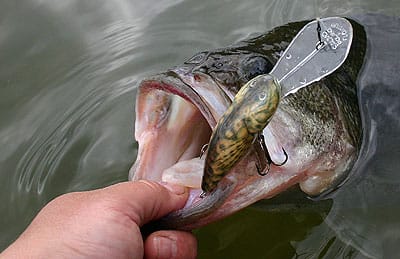OK, beauty may be in the eye of the beholder because bullheads might be one of the homeliest fish in fresh water. But there are a lot of reasons to think they’re attractive. First, bullheads look wonderful when fried to a golden brown color. And when taken from good clean water, they’re one of the best-tasting fish around!
Another reason to look with favor on the bullhead is because of their attitude. They are aggressive feeders who put up a noble battle when on the hook. They’re not necessarily capable of pulling super-hard, but they don’t give up, and you have to give a fish some points for that. These characteristics make bullheads a great species for reliable fishing action that keeps children and adults satisfied for hours.

Seasons and limits for bullheads are generous, to say the least. In my home state of Minnesota, the bullhead season never closes and the possession limit is 100 fish. That’s a lot of good eatin’! So, when you consider all of these reasons to fish for bullheads, you begin to see the beauty in this species.
As I mentioned, bullheads are aggressive feeders, so they’re relatively easy to catch. They’ll eat practically anything, from chunks of hot dogs to dough balls. But my favorite bullhead bait is a gob of night crawler on a long-shank hook [size 1 or 2]. I like the long hook because those whiskered fish are notorious for swallowing the bait, and the longer shank makes it easier to extract the hook even if the fish has taken it deep.
Needle-nosed pliers are a MUST for bullhead fishing, so make sure you have a pair. Another suitable hook to use is a circle hook, which does a good job of hooking the fish in the corner of the mouth most of the time. However, because of the bullhead’s raspy mouth and strong jaws, sometimes the line gets trapped in the center of the fish’s mouth, which prevents the circle hook from getting to the corner of the mouth.
Bullhead tackle is pretty basic. A light-to-medium spinning rod and reel spooled with 6-pound line is just the ticket. Put a splitshot sinker a foot from the hook and you’re in business. Bullheads like to feed near the bottom, and that splitshot puts the bait right where they want it. If you do use night crawlers, try giving the worm a shot of air from a worm blower.
It’ll create enough buoyancy to float the crawler slightly above the bottom and can sometimes increase your bites.
In the springtime and through early summer, bullhead fishing is good during daylight hours and after dark. The fish are relatively shallow during these months, in areas with muddy bottoms, and they feed aggressively. Just pitch out your crawler, let it sink to the bottom, and wait for the bite. You don’t need to impart any action on the bait.
As summer progresses and after the bullheads have spawned, they typically move deeper and hang out at depths of 12-15 feet. The bite definitely becomes better at night during the warm summer months. But the tactic for catching them remains the same: a night crawler on the bottom.

A lot of people get nervous after they’ve caught a bullhead and need to take it off the hook. They’re afraid to get “stung.” It’s good to be cautious, because I’ve been jabbed by that dorsal spine countless times. It doesn’t hurt too badly, and it’s not necessarily dangerous, but it is unpleasant. So be patient and careful when handling bullheads (or any catfish). Suspend the fish by the fishing line and with your other hand, slide it up from the tail section until your palm comes to the back side of the dorsal spine. Then grip the bullhead while being careful of the lateral spines. Once you get the hang of it, you’ll never be afraid to handle bullheads again.
There are a lot of opinions about how to clean a bullhead. Some people gut them and skin them with pliers, and leave all the bones in. I usually just fillet them like any other fish. You can cook them exactly the same way you prepare other fish, but be prepared for a very memorable dining experience. They are fantastic to eat, and the texture of their meat is very unique and appealing.
Next time you’re at the lake or river and find an area with a muddy bottom, tie on a hook with a splitshot sinker and soak a night crawler. If the bullheads are there, you’ll know it right away. And if you’re lucky, you’ll put a bunch in the livewell and treat your family to an amazing meal.



